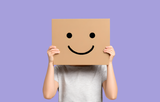Supporting Emotional Regulation: 5 Fun Activities That Actually Work
Helping Kids Understand and Manage Big Feelings Through Play
At Sensory Oasis for Kids, we know that emotional regulation isn’t just about “calming down.” It’s about recognising big feelings, understanding them, and learning what to do with them - in a way that feels safe and supportive.
For neurodivergent kids, this can be extra challenging - and that’s okay! Every child learns emotional regulation at their own pace. The good news? We can teach these important skills through something kids already love: play.
Here are five fun, sensory-friendly activities that actually help kids explore, express and regulate their emotions - no lectures required!
Feelings Charades
Act it out! Guess the feeling!
In this game, you or your child act out different emotions (happy, angry, excited, nervous, frustrated), and the other guesses. No words allowed - just faces and body language.
Why it works:
It builds emotional awareness, body cues, and empathy in a low-pressure, silly way. You’ll also probably laugh a lot — which is a bonus!
Make it visual: Use cards with facial expressions or drawings to help younger kids understand the emotions.
Create a Calm-Down Jar
Grab a clear jar, water, glitter, glue, and food colouring - and shake up some sensory magic!
Once made, the jar becomes a mesmerising tool for emotional resets. When your child feels overwhelmed, they can shake the jar and watch the glitter slowly settle - just like their feelings.
Why it works:
It gives a visual and calming experience that gently teaches kids to pause, breathe, and wait out the storm inside.
Bonus tip: Let your child choose the colours so they feel ownership over their calm-down tool.
Mood Music Dance Party
Put on songs that represent different moods - fast and silly, slow and soothing, stompy and strong - and dance it out!
Then pause and chat:
“What did that song feel like?”
“When do you feel that way?”
Why it works:
It helps children connect physical movement to emotions and teaches them it’s okay to move through feelings in expressive ways.
Add instruments or scarves to make it extra fun and sensory-rich!
Draw Your Feelings
Offer paper, markers, stickers, or crayons and ask your child to draw how they feel right now. No rules. No right or wrong.
Then, if they’re up for it, ask questions like:
“Can you tell me about this part?”
“What would help this feeling feel better?”
Why it works:
Some kids can’t say what they feel - but they can show you. Drawing allows them to express what’s happening inside without the pressure of words.
Try drawing together, so it feels like a shared activity rather than a performance.
Build a “Feelings First Aid Kit”
Make a special box or bag filled with your child’s favourite regulation tools:
✔️ Fidgets
✔️ Weighted lap buddies
✔️ Scented playdough
✔️ Headphones
✔️ Chewable jewellery
✔️ A feelings chart
✔️ A mini visual schedule
Let your child help choose what goes inside and where to keep it.
Why it works:
Having a go-to kit gives children control and comfort. It becomes their toolbox for when things get tricky.
You can even label it with their name: “Ella’s Calming Kit” or “Luca’s Feelings Toolbox.”
Remember: Big Feelings Are Not Bad Feelings
We’re not trying to get rid of emotions - we’re helping kids learn how to ride the wave. Emotional regulation is a skill, and every time you play, model, or support your child through a feeling, you’re teaching them something powerful.
And the best part? You don’t have to do it alone. At Sensory Oasis for Kids, we’re here with tools, toys, and support that celebrate neurodivergent kids for exactly who they are - big feelings and all.
Ready to explore sensory-friendly fidgets, calming kits and emotional regulation tools? Check out our range here.
Let’s make emotional learning feel safe, fun, and full of sparkles!
Recent Posts
-
The Problem with “Good Behaviour”: Why It’s Not Always a Win
Let’s talk about something that gets a lot of praise… but not always for the right reasons. You know …Oct 28, 2025 -
Parenting Through Invisible Disabilities
You Can’t See It, But It’s There This week is Invisible Disabilities Week, and I wanted to take a mo …Oct 20, 2025 -
National Carers Week - To The Carer Who Also Needs Care
Each October, Australia shines a spotlight on carers - those quiet heroes who give without asking mu …Oct 15, 2025




